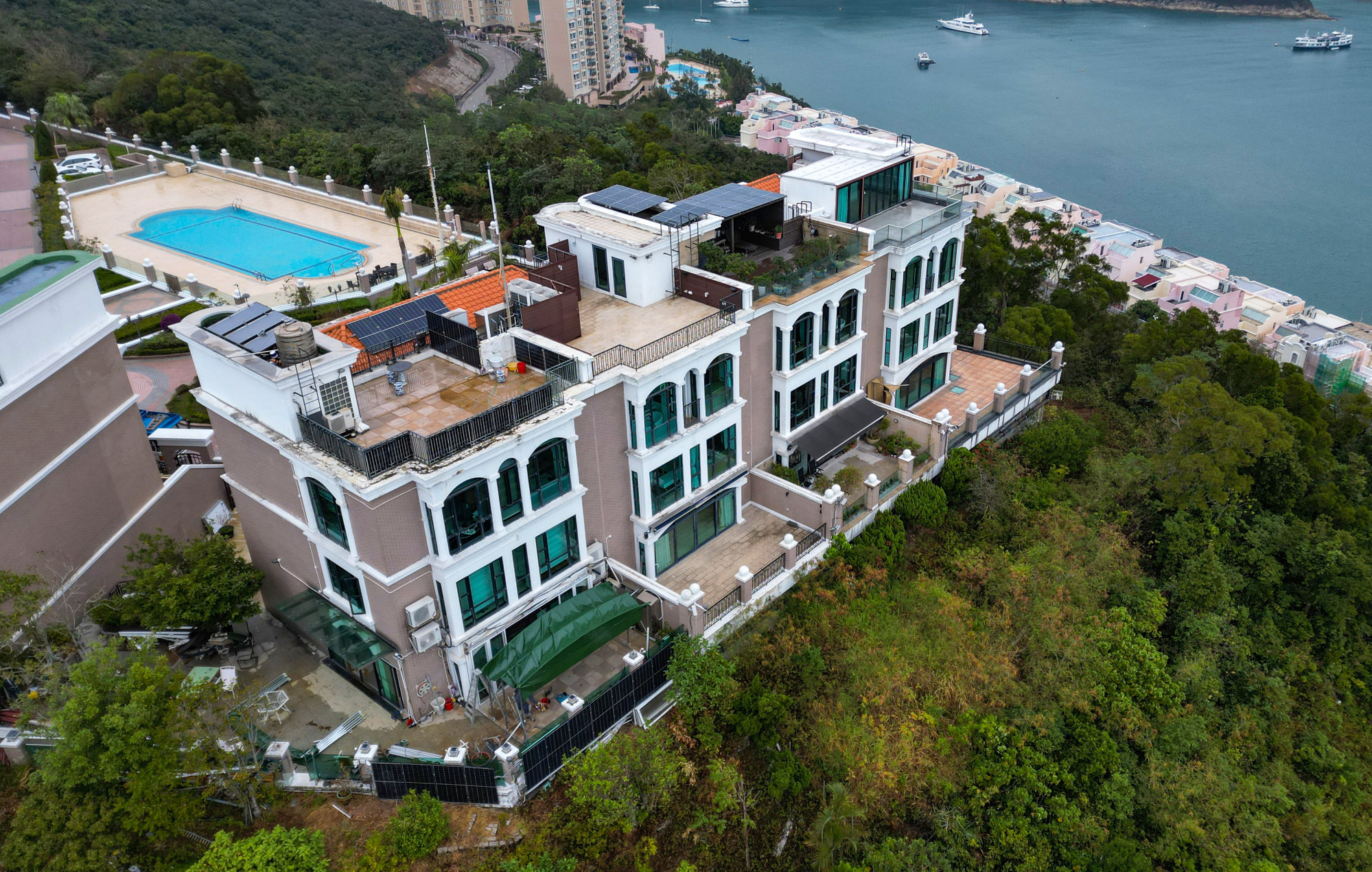
Hong Kong’s leader vows to crack down on illegal structures after Post finds most homes in 3 luxury estates suspected of breaching rules
- City leader John Lee says government has adopted risk-based approach in tackling problem, but dodged question on inspecting all upmarket detached houses
- Post finds nearly 90 per cent of houses at Flamingo Garden on Kowloon Peak, Villa Rosa in Tai Tam and Seaview Villas in Tai Po are suspected to have unauthorised additions
Hong Kong’s leader has pledged to crack down on illegal structures across the city after a Post investigation found that an overwhelming majority of houses in three luxury estates were suspected of breaching building and land rules.
Acknowledging the large number of houses involved, Lee said the government had adopted a risk-based approach in tackling the problem.
“We will set priorities in accordance with the scale of the problem [and] the seriousness of the problem, particularly the safety consideration and environmental hazard consideration,” he said.
“We will set our priorities in this way so that we can address what we consider are the unauthorised illegal structures that deserve our early attention. We will continue to inspect and also take action in accordance with these priorities.”
But Lee dodged a question on whether he would consider inspecting all upmarket detached houses to show his administration’s determination in addressing the long-standing issue in Hong Kong.
Exposing Hong Kong’s invisible land grab by owners of luxury homes
During a month-long investigation, the Post found 74 per cent of the 50 houses in Block B of Flamingo Garden on Kowloon Peak, Villa Rosa in Tai Tam and Seaview Villas in Tai Po – valued at between HK$50 million (US$6.39 million) and HK$119 million each – were suspected of having enlarged their properties on public land without approval.
Nearly 90 per cent of the homes are suspected of having unauthorised structures at or near their properties. Some of these additions were built on government-owned slopes, sparking concerns not only over safety but also equity and fairness.
Authorities subsequently issued notices and orders to 74 of the 89 seaside houses, requiring them to restore their properties, cease occupation on government land or both.
According to the Buildings Ordinance, anyone who carries out building works without obtaining government approval could face a maximum fine of HK$400,000 and two years’ jail upon conviction.
Those convicted of failing to comply with a removal order could face a maximum fine of HK$200,000 and a year’s imprisonment, as well as having to pay HK$20,000 for each day that the offence continues.
But building experts have said finding direct evidence implicating the person involved is difficult and the government may opt to issue a statutory removal order for the unauthorised structures.
Why Hong Kong can’t seem to go after homeowners with unauthorised structures
According to figures the Buildings Department released last September, its officials had issued 7,225 removal orders for unauthorised structures in 2023. It had also prosecuted 3,310 cases, it said, but warned that some cases might take more than a year to handle.
Legislator Doreen Kong Yuk-foon said the government should speed up prosecutions and clarify which types of buildings or homes they would prioritise for inspection.
“For example, they can be structures on the slope, isolated houses or terraced houses, industrial buildings or residential blocks of a certain age,” Kong said. “The government should list three or four items to give the public an idea about it.”

She noted that fines generated from convictions could add income to the public coffers but stressed the aim should be on law enforcement and rectifying the situation.
Andrew Lam Siu-lo, deputy chairman of the legislature’s development panel, said tackling all illegal structures in a short period of time would be difficult as many were hard to notice from the outside and required carrying out an investigation to identify.
But the government could eventually ask owners to declare their existing unapproved structures before a certain deadline and impose heavier penalties on new cases that emerged afterwards, he suggested.

Authorities could also tie the fine with the assessed market value of the structure and impose fixed penalties under the Buildings Ordinance to accelerate prosecution and increase the deterrent effect, he added.
City leader Lee last year announced a review of the Buildings Ordinance with the aim of lowering the prosecution threshold, streamlining prosecution procedures and raising penalties. The proposal is scheduled to be unveiled this year.

